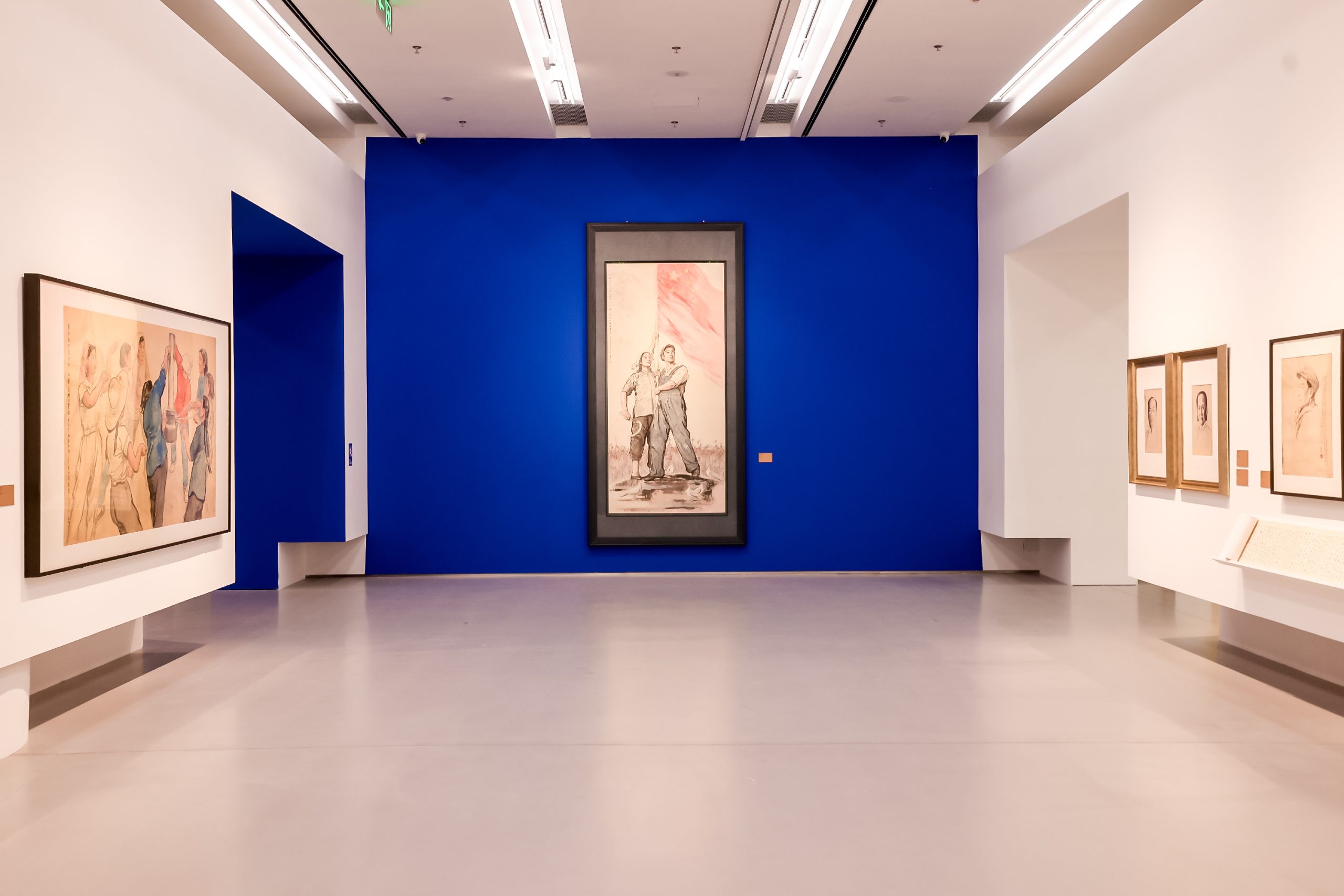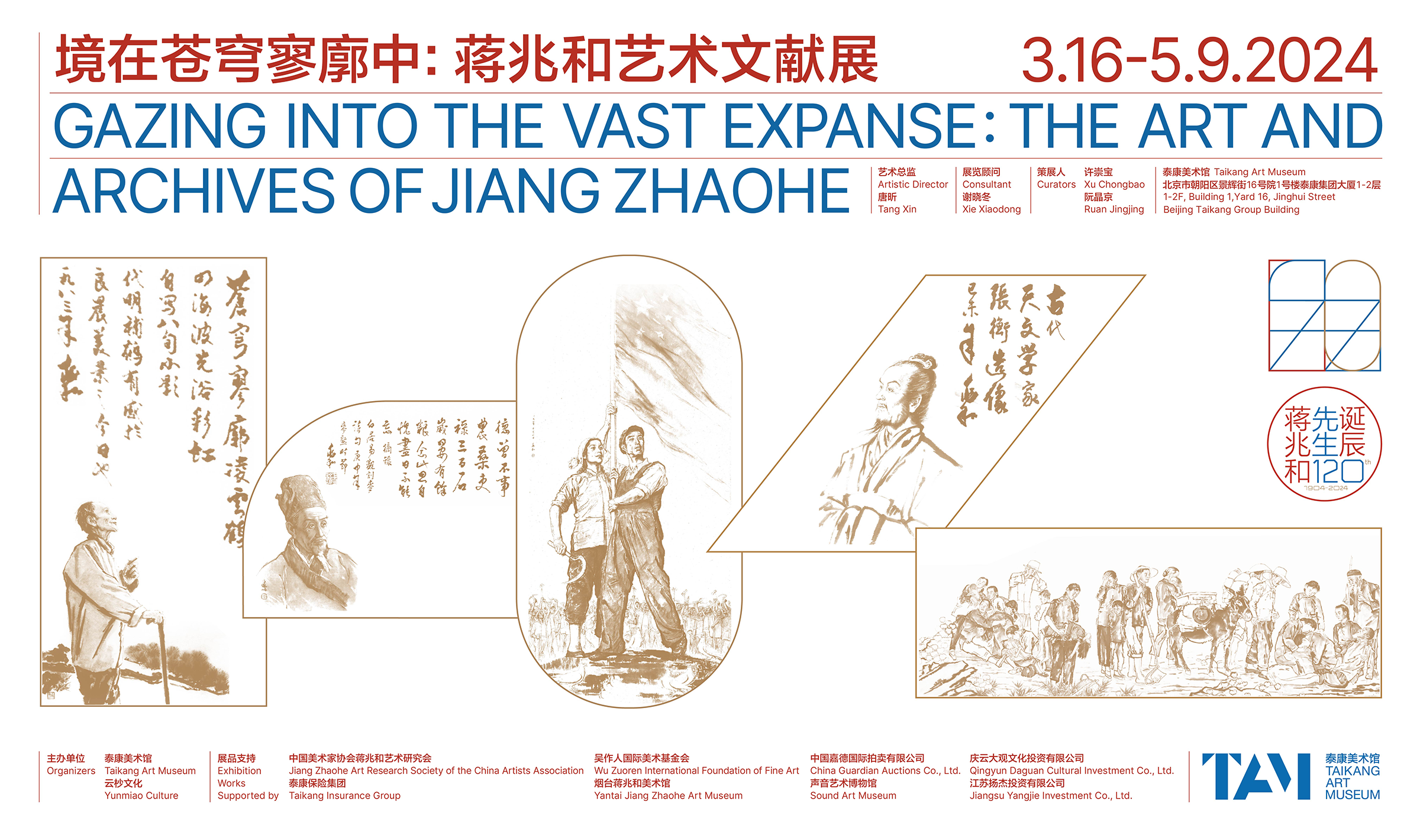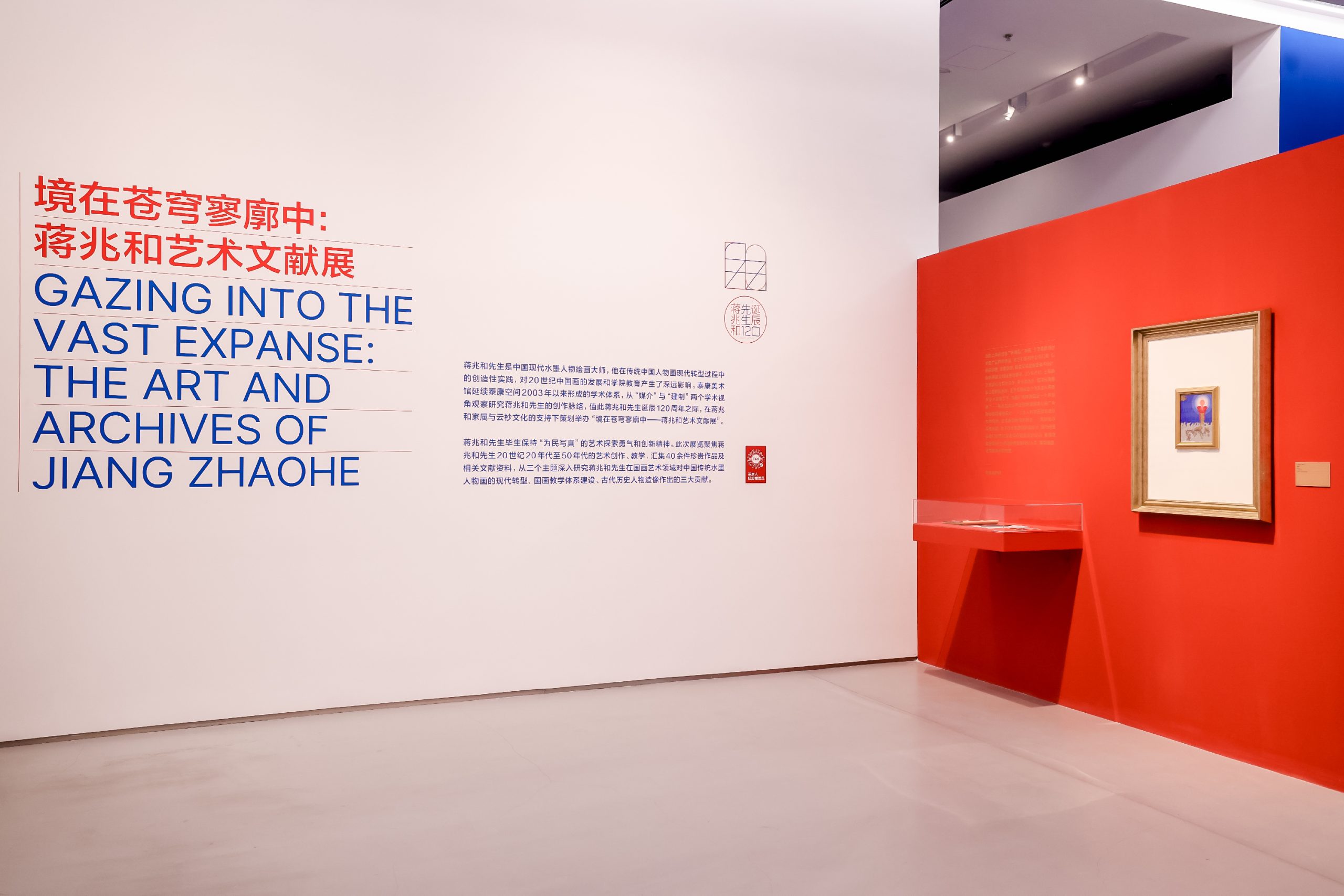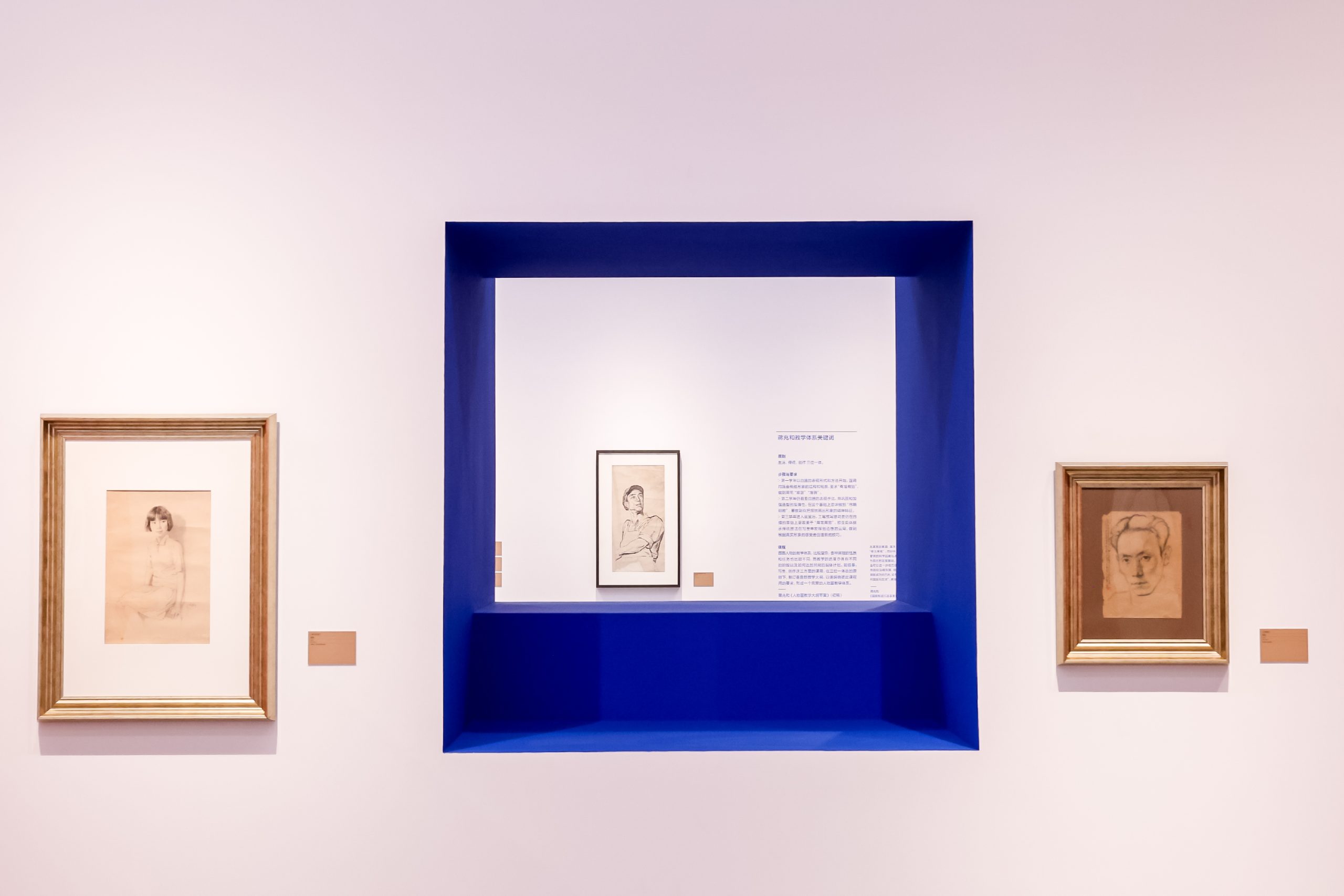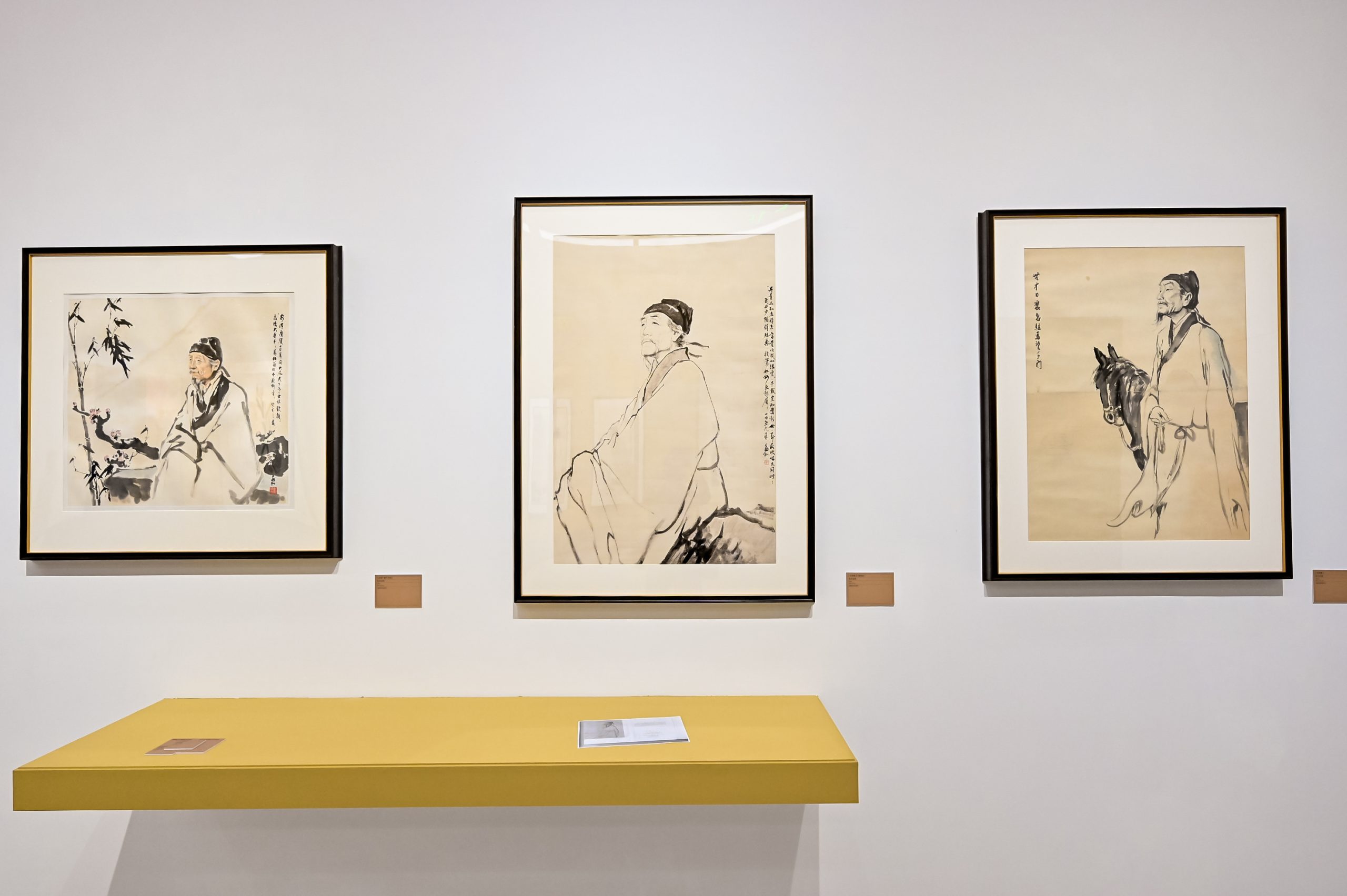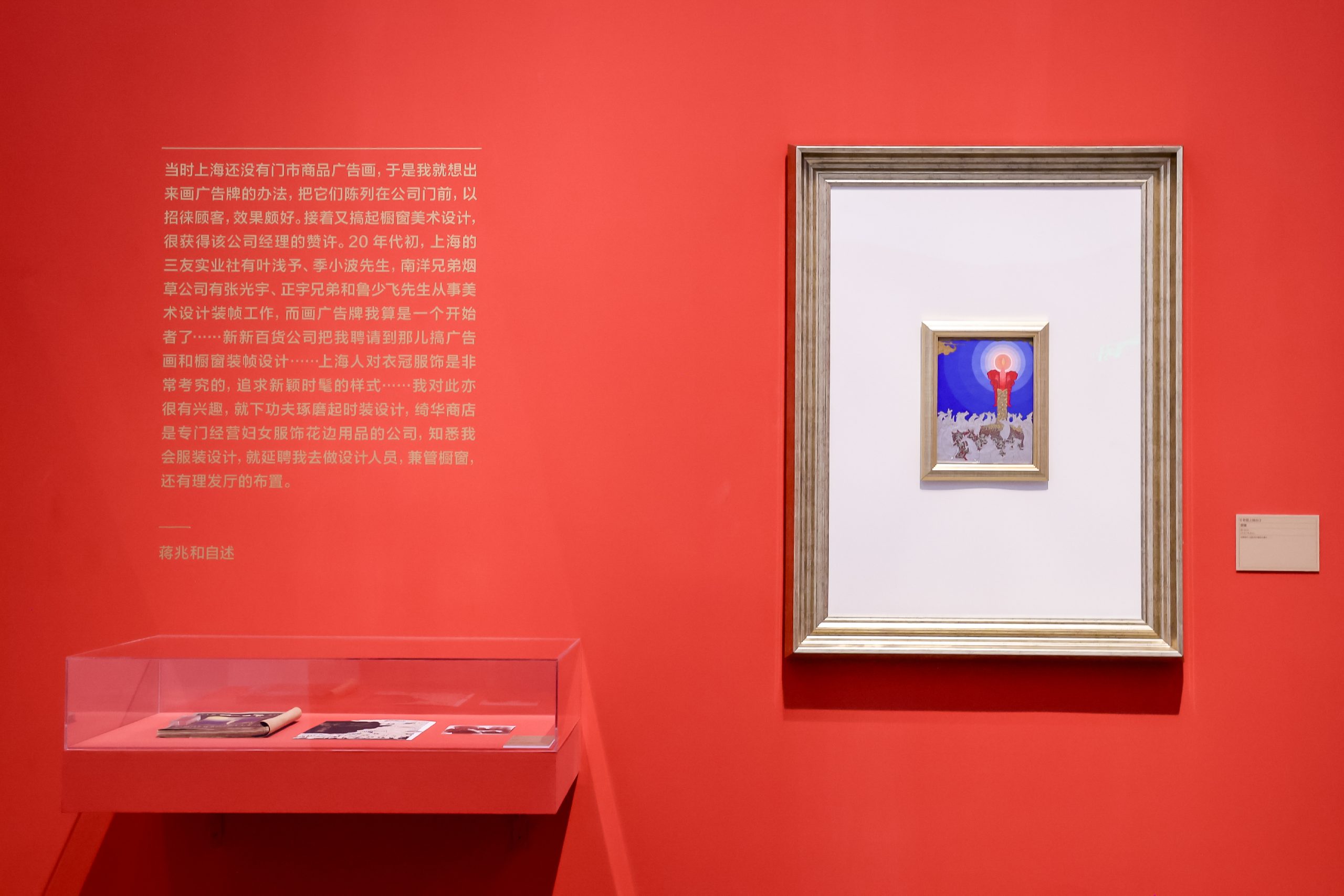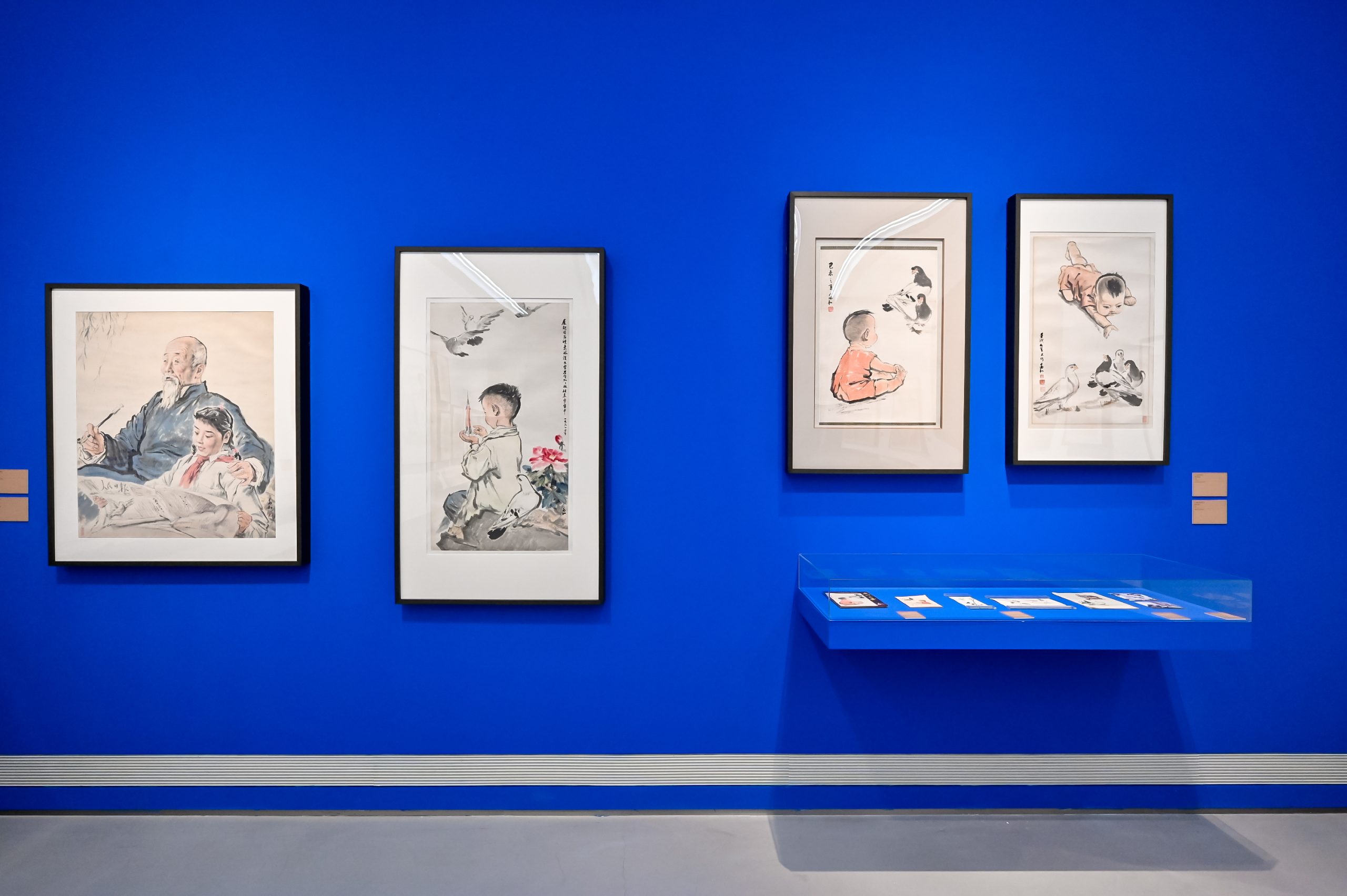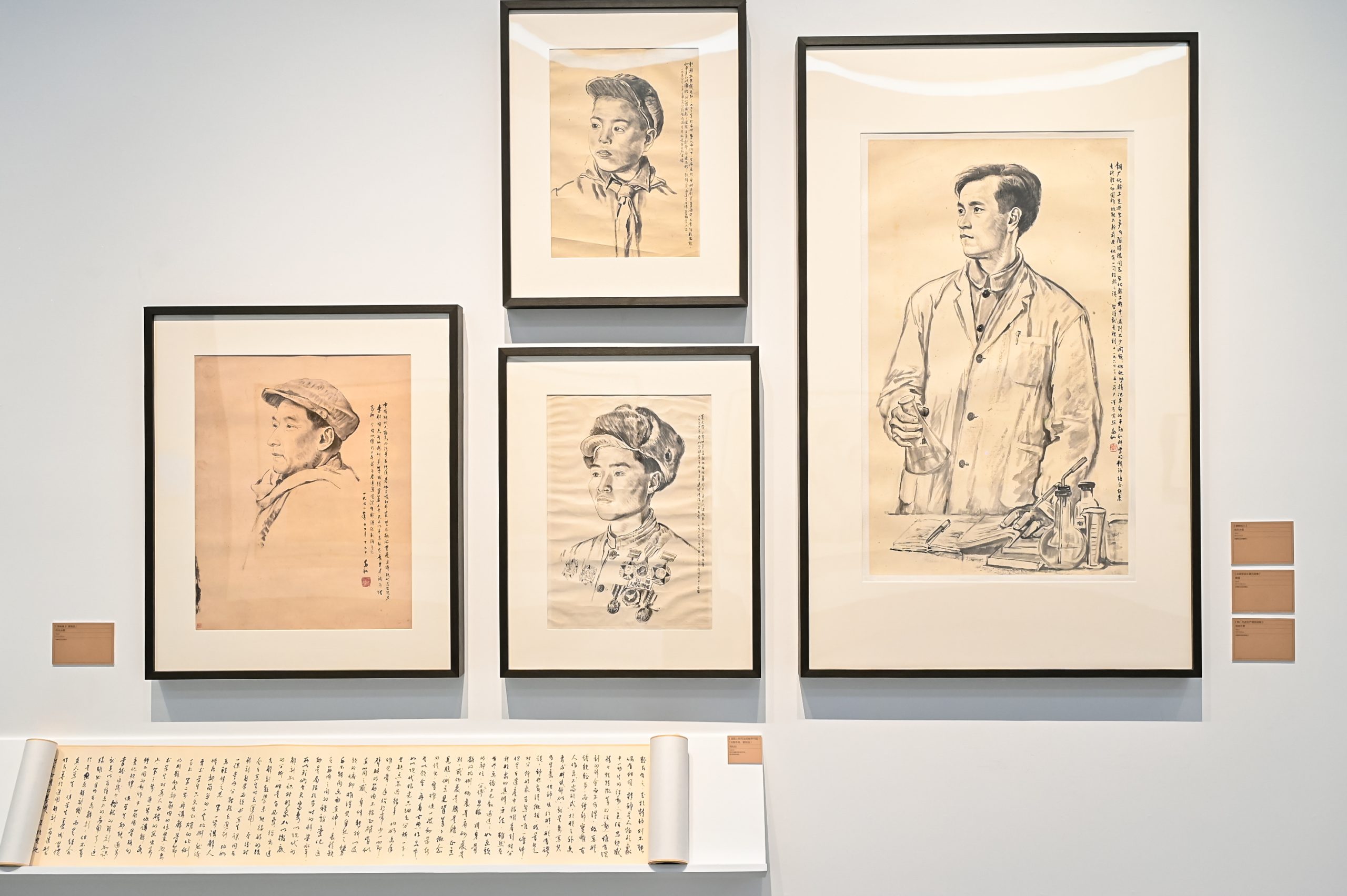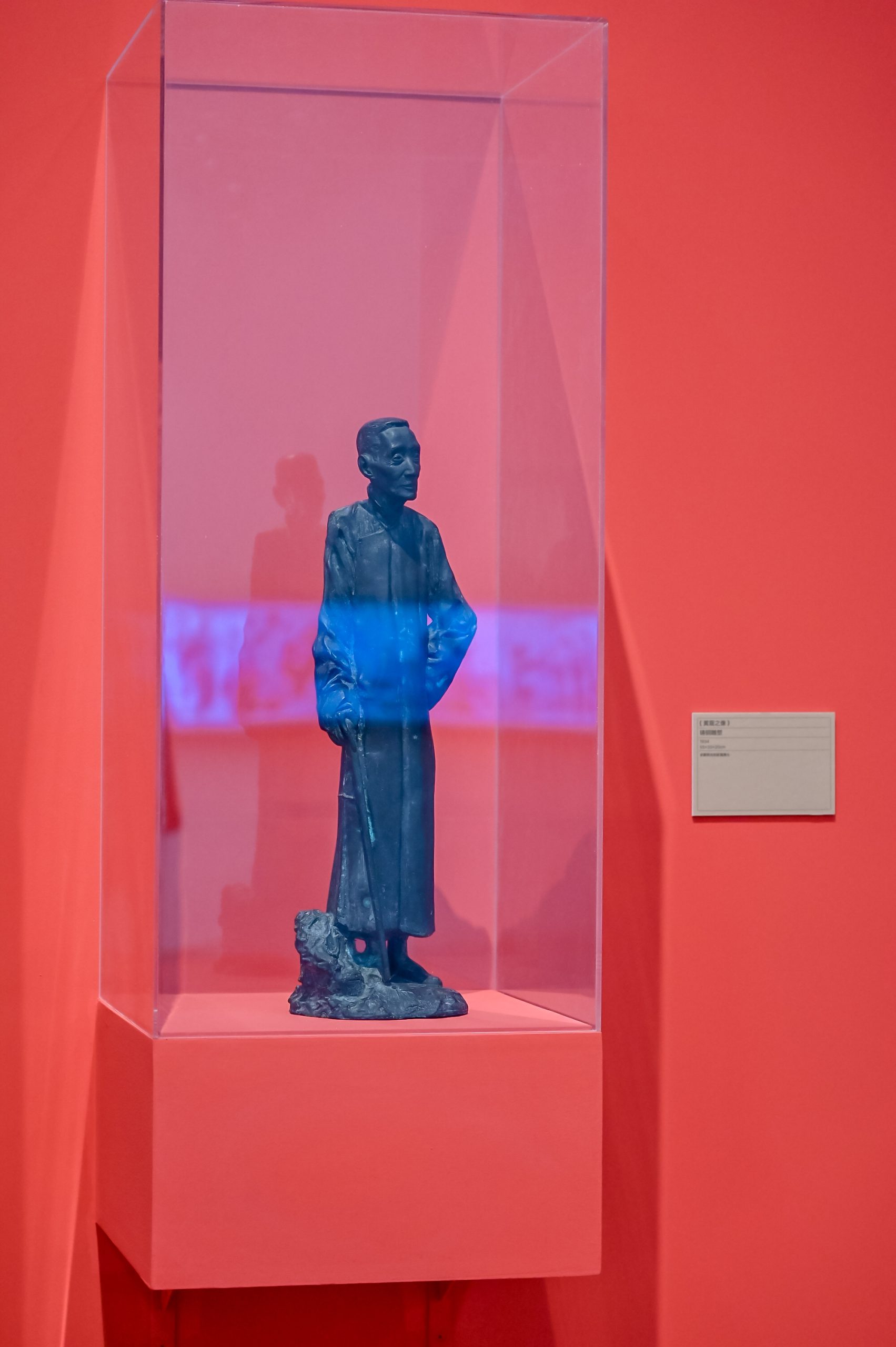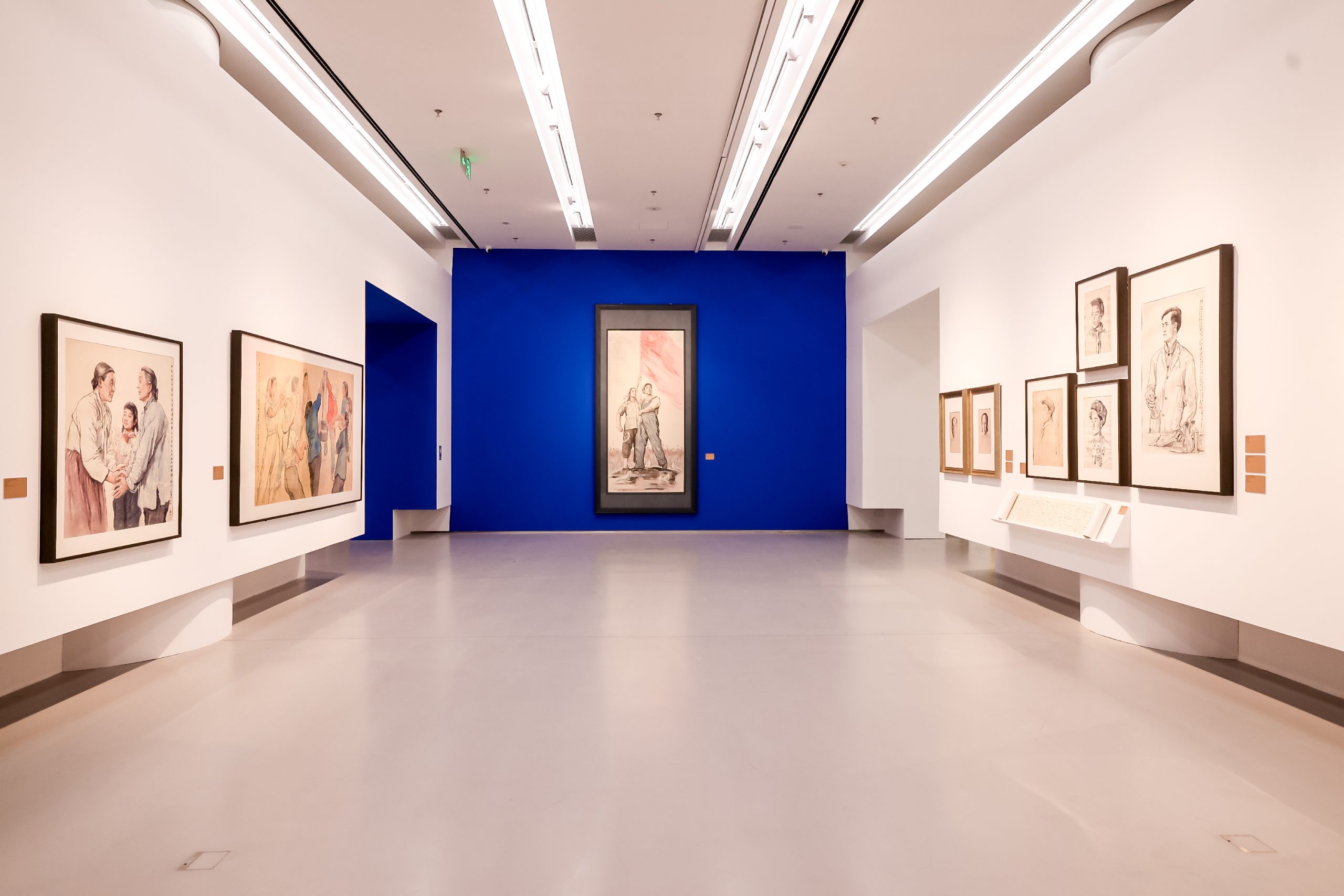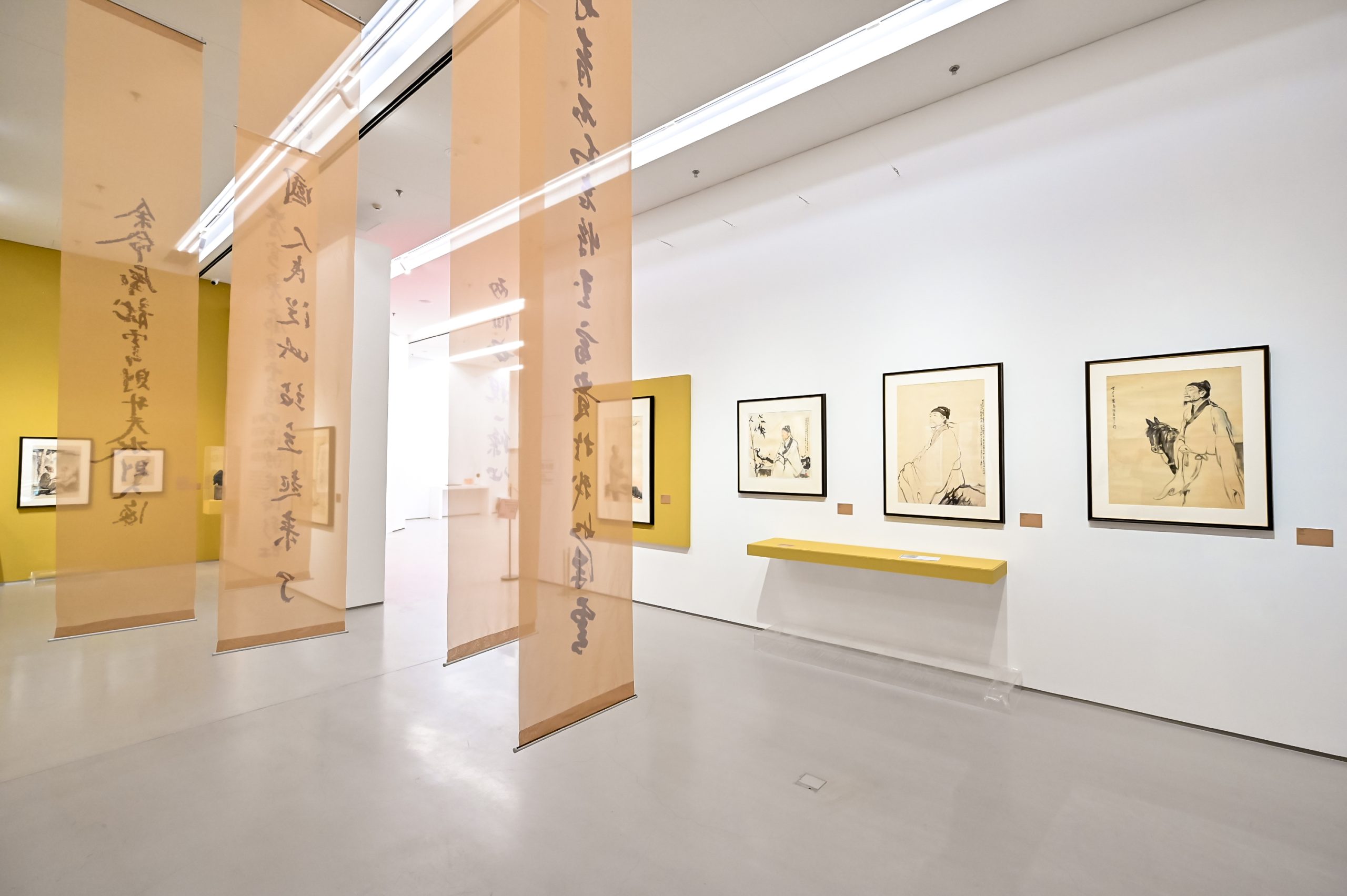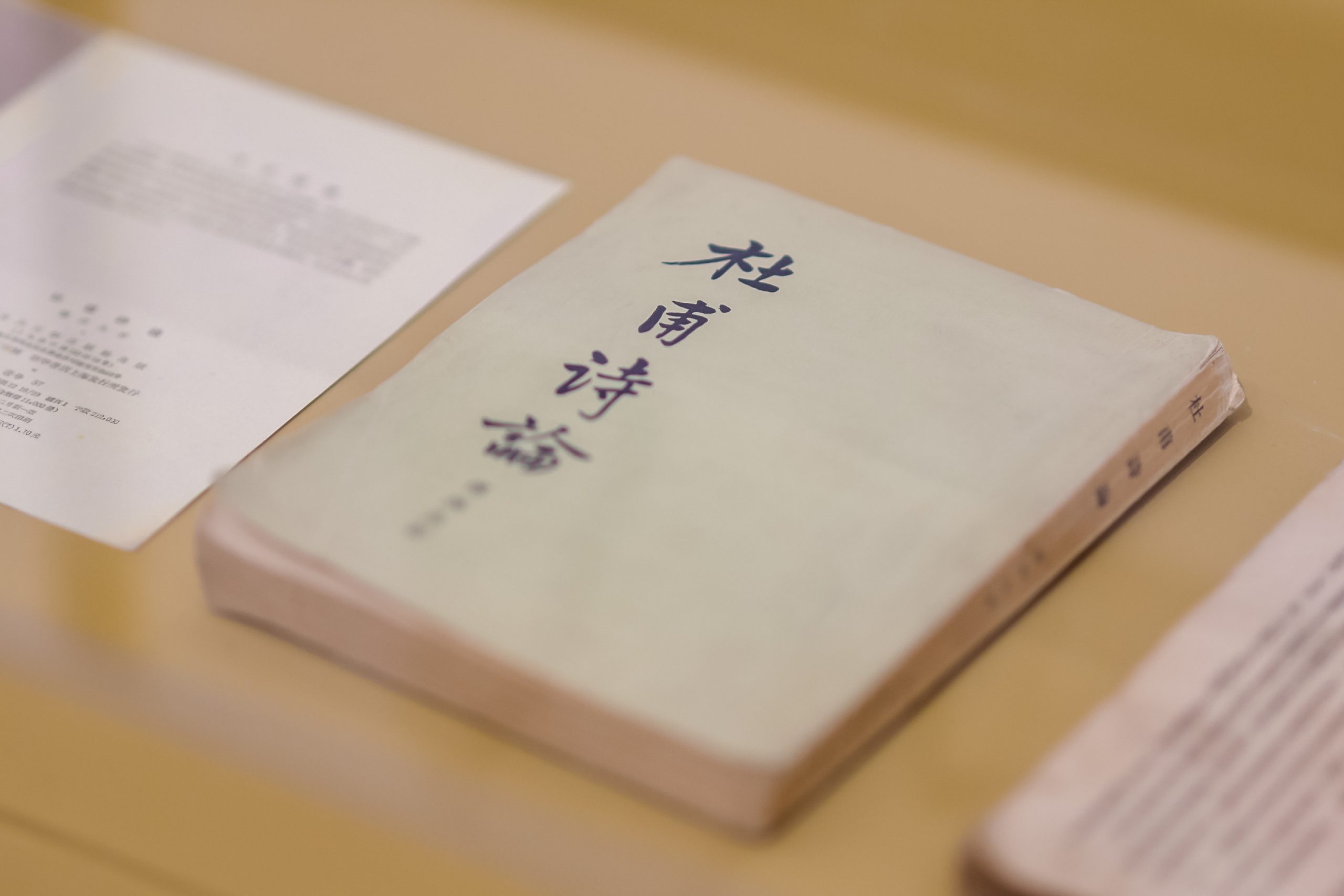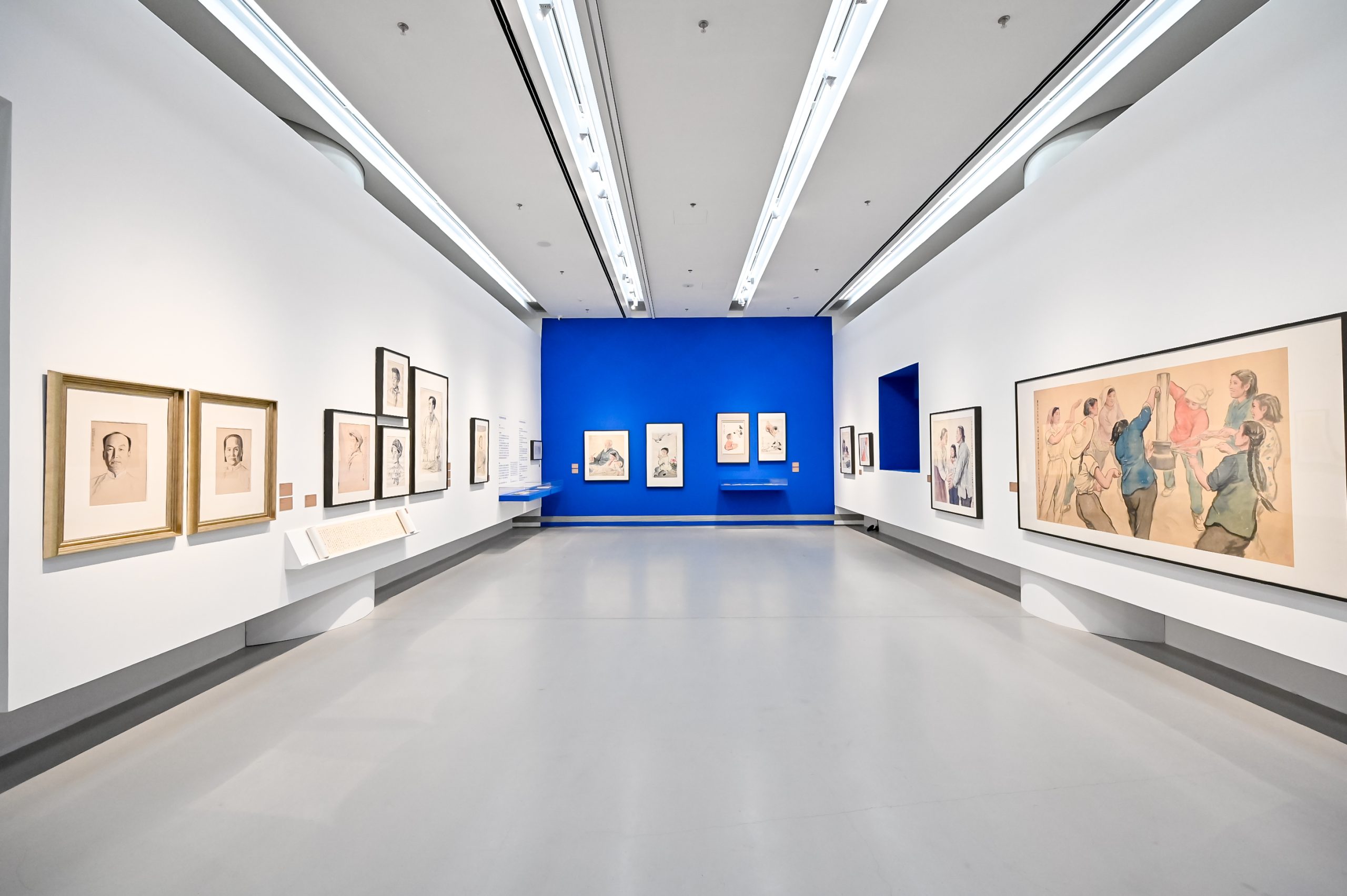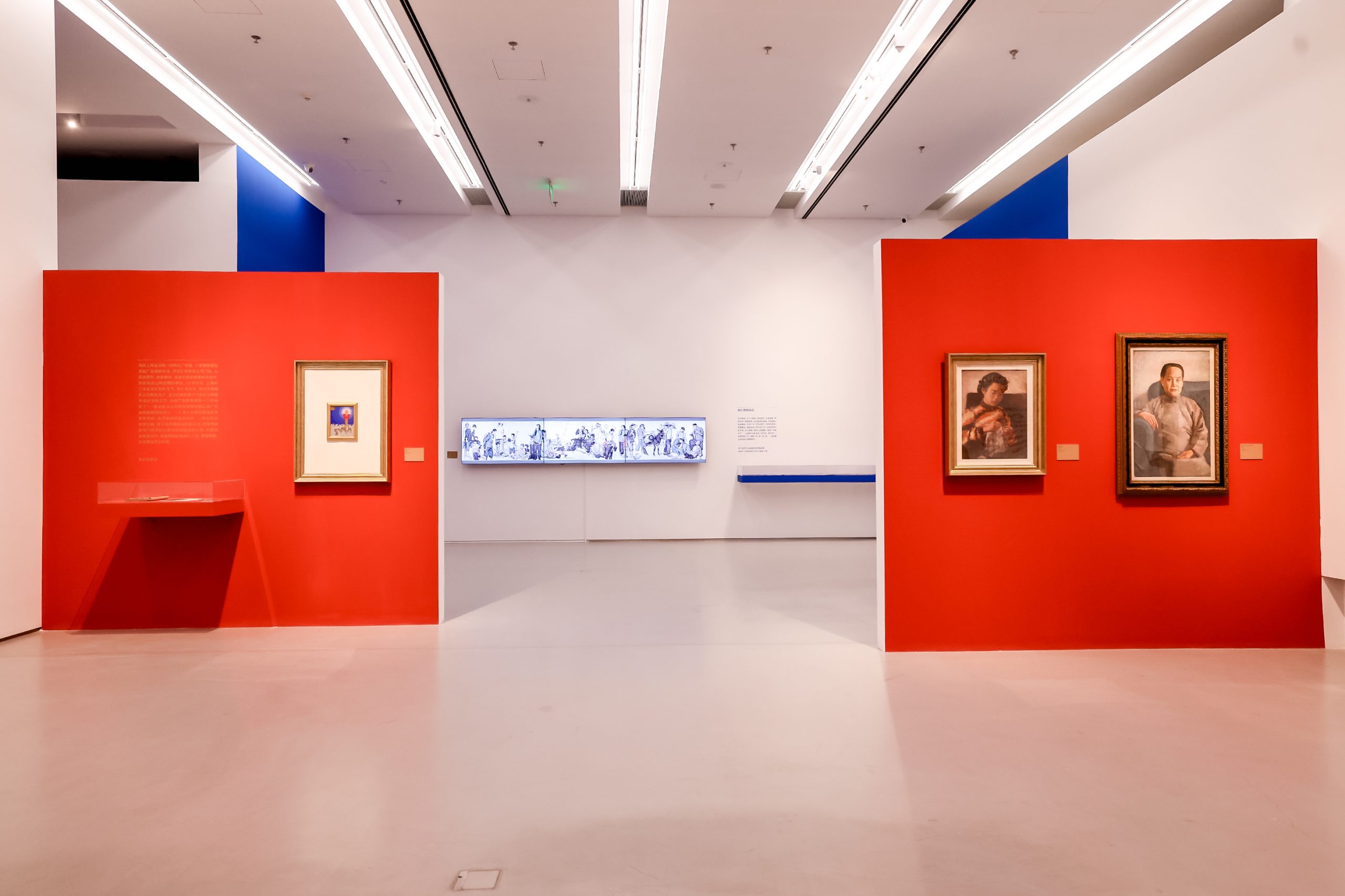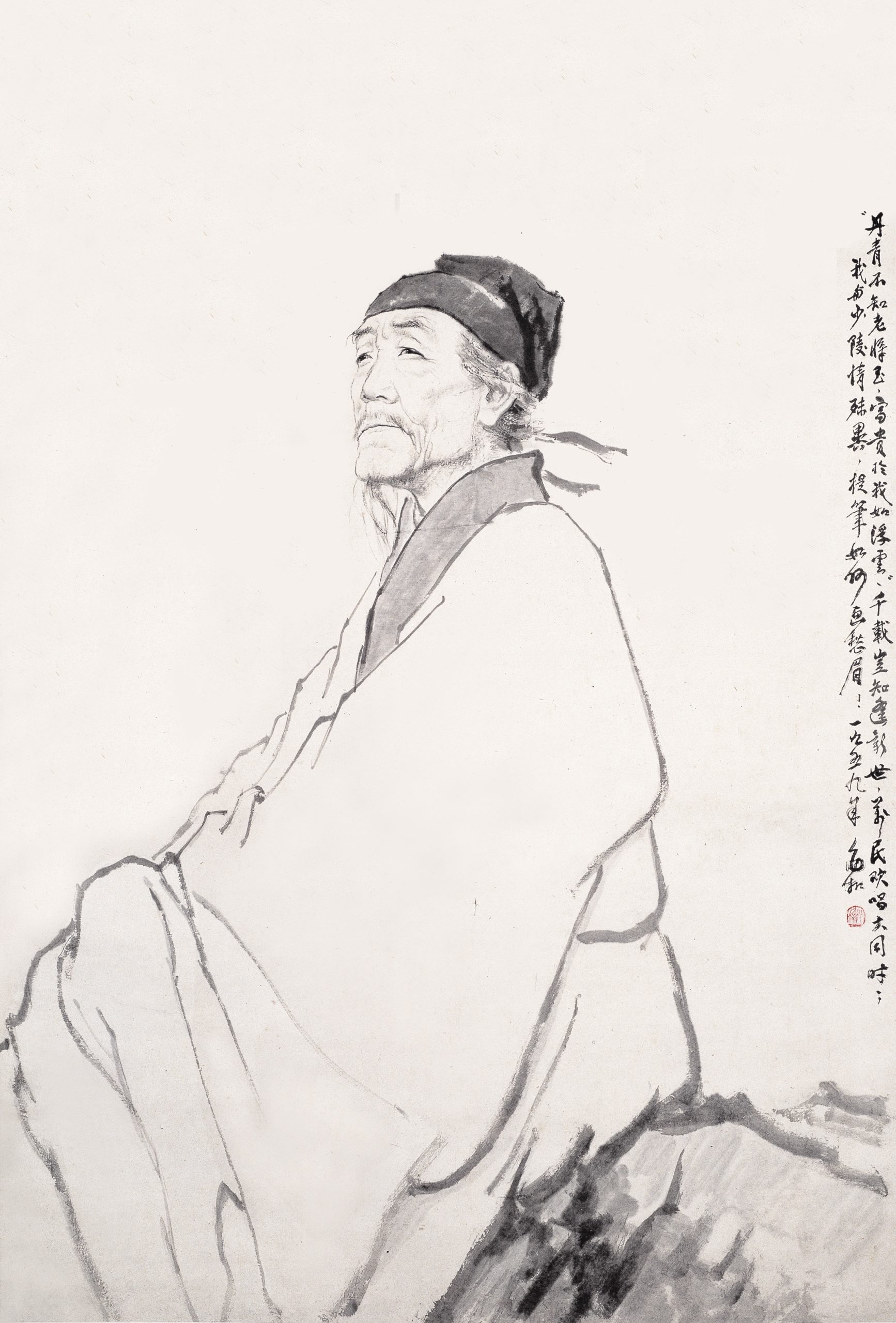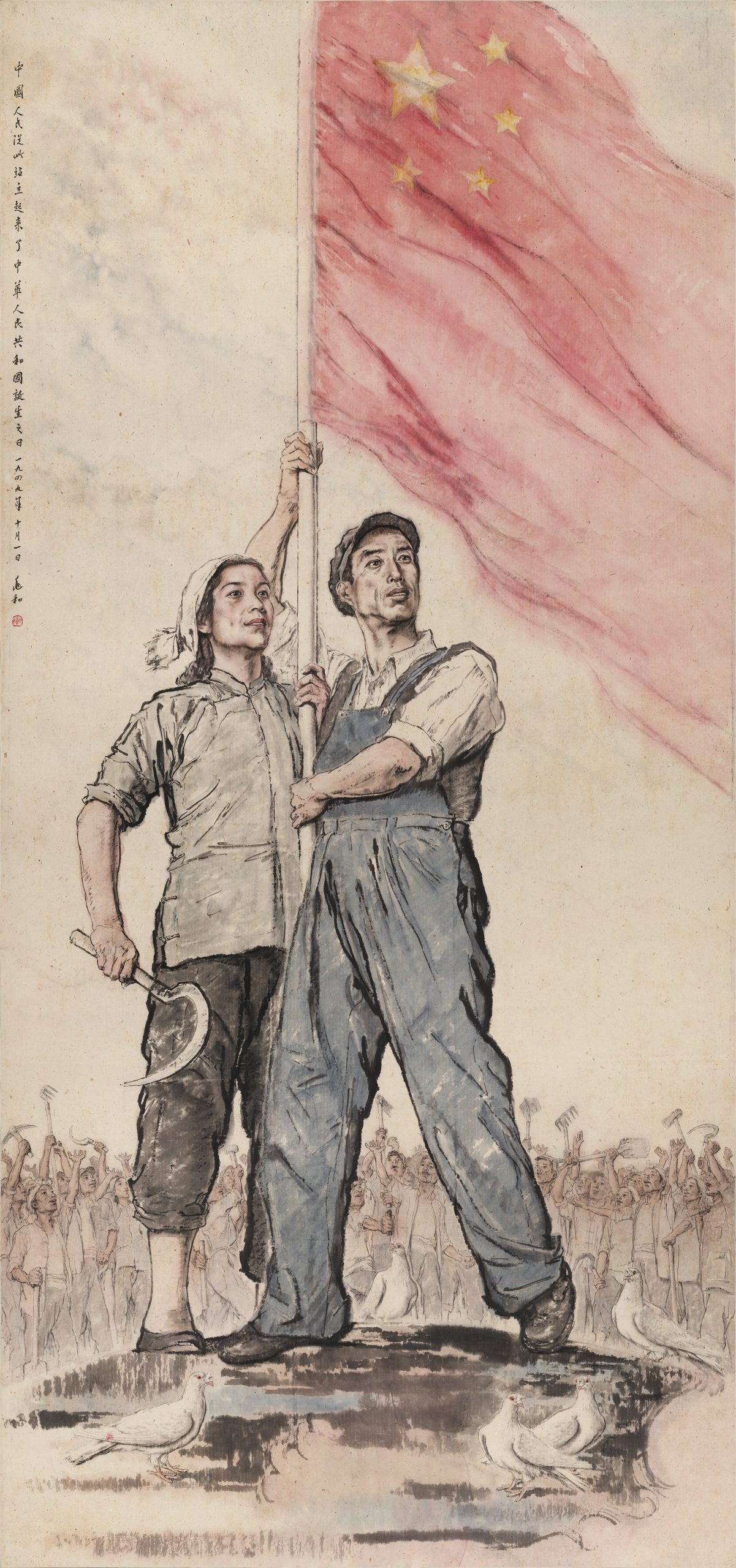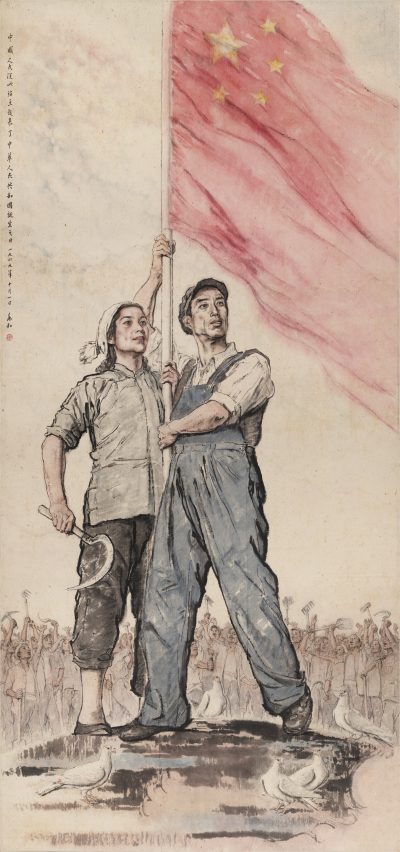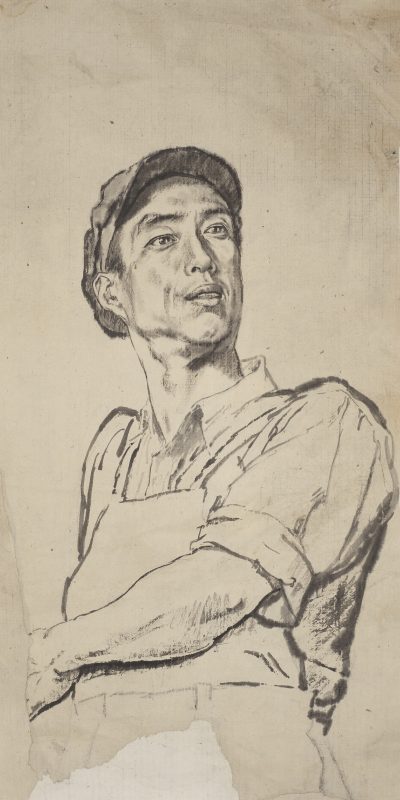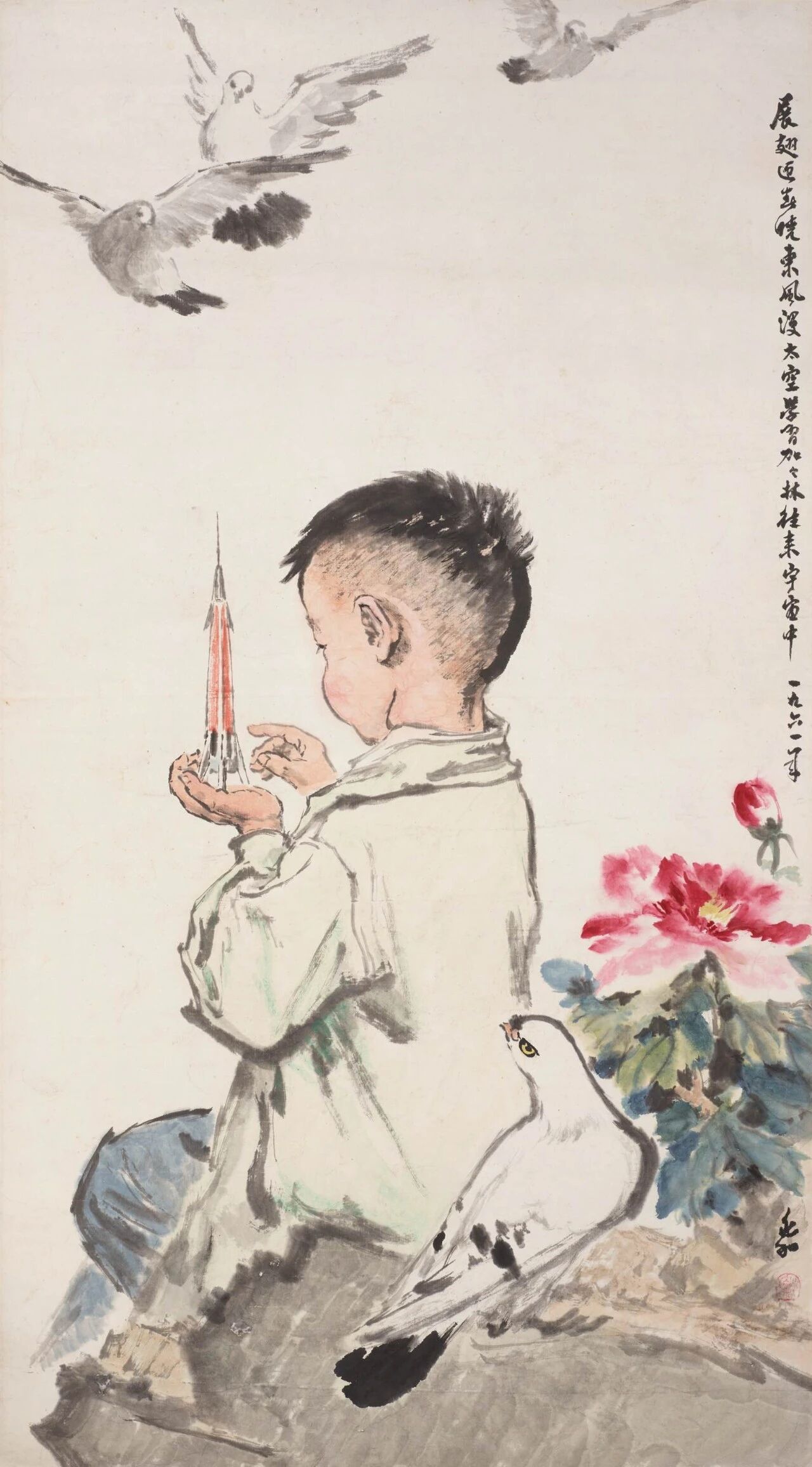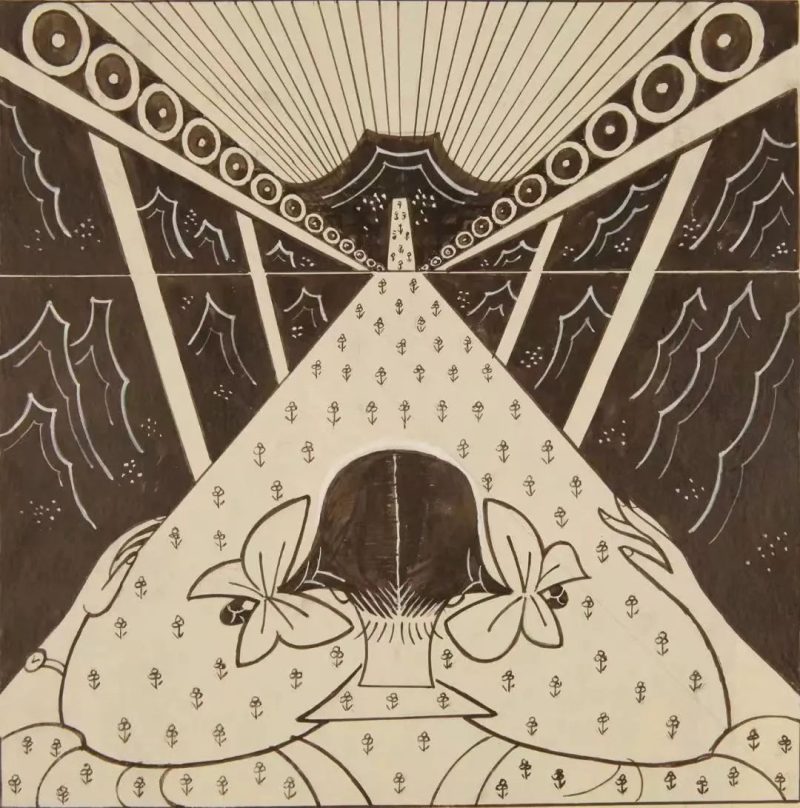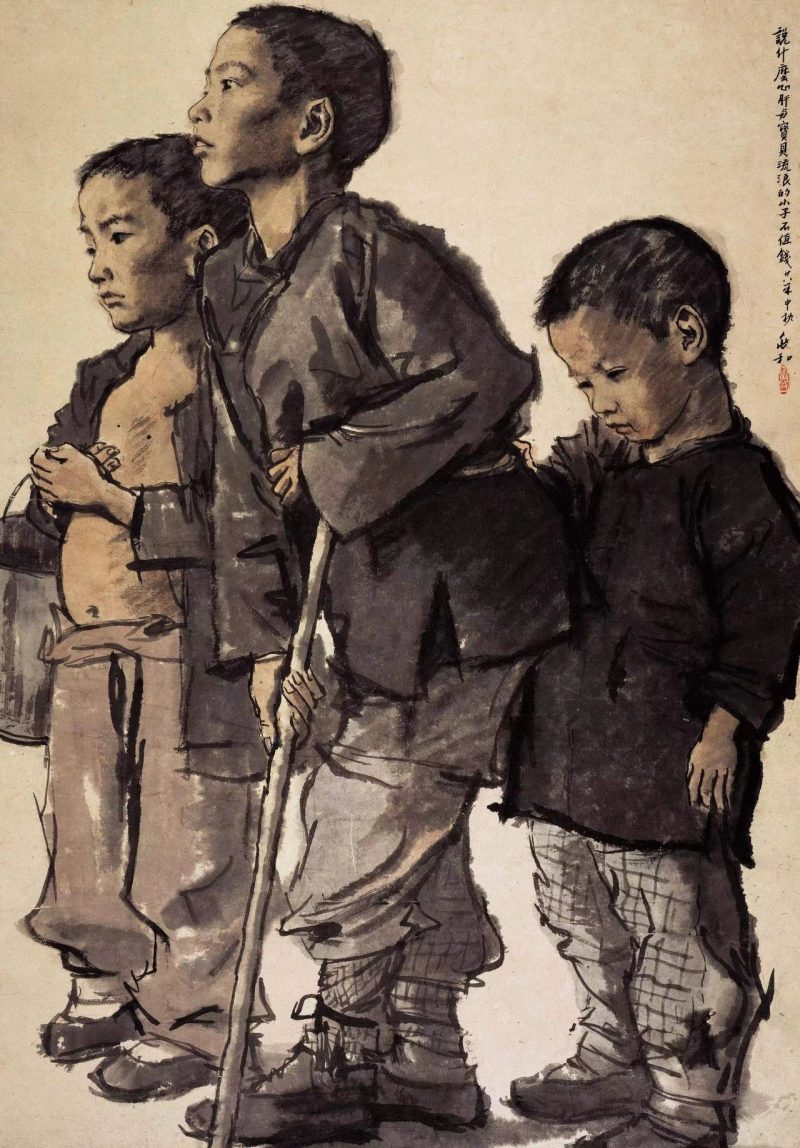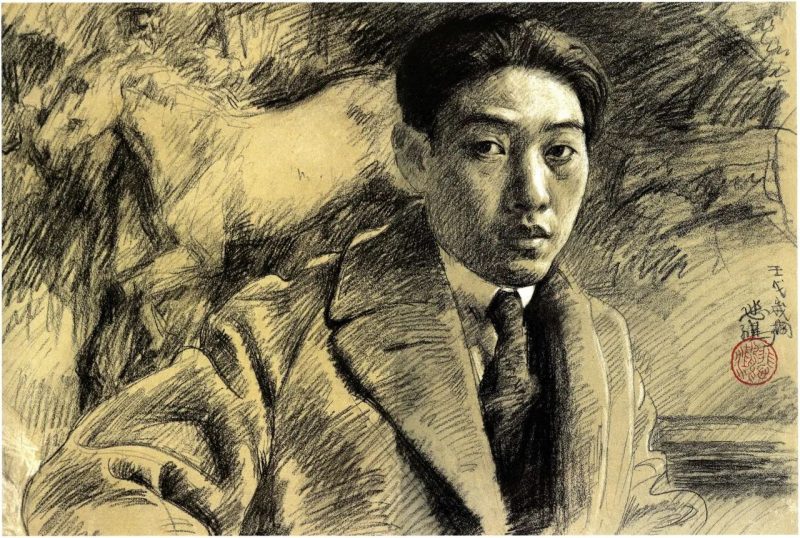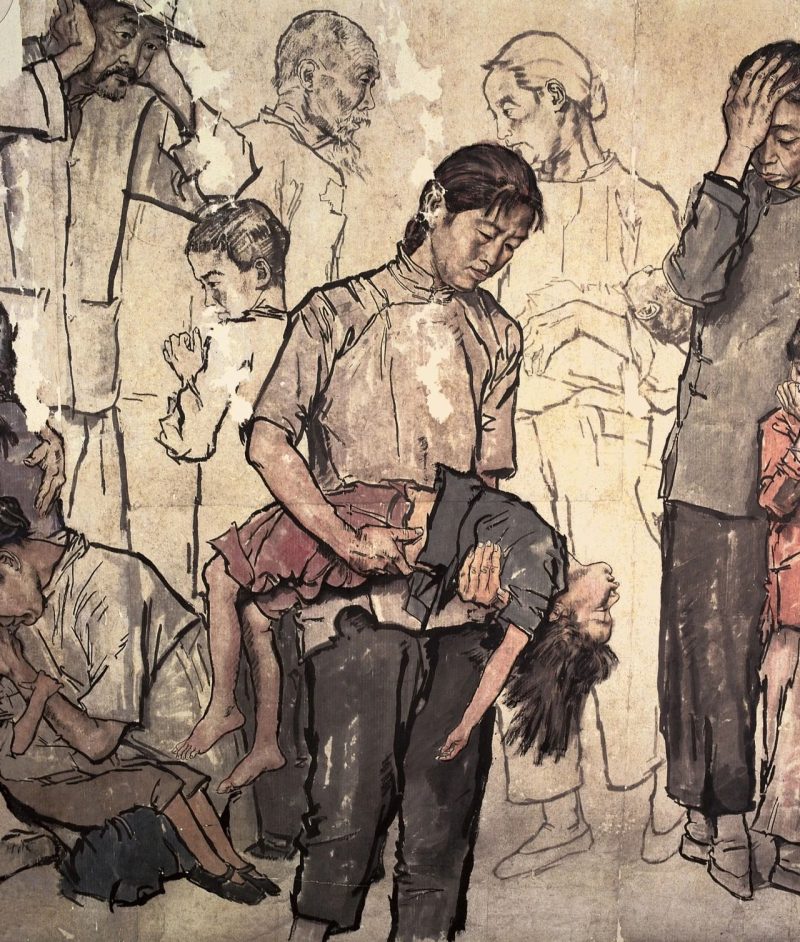2024.03.16 - 2024.05.31
Gazing into the Vast Expanse
- DurationMarch 16 - May 31,2024
- Opening hourTuesday - Sunday 10:00-17:30
- AddressTaikang Art Museum, 1-2F Taikang Art Museum, Building 1, Yard 16, Jinghui Street,Beijing Taikang Group Building
- ArtistJiang Zhaohe
- CuratorsXu Chongbao, Ruan Jingjing
- OrganizersTaikang Art Museum、Yunmiao Culture
- Exhibition SupportJiang Zhaohe Art Research Society of the China Artists Association, Taikang Insurance Group, Wu Zuoren International Foundation of Fine Art, Yantai Jiang Zhaohe Art Museum, China Guardian Auctions Co., Ltd., Sound Art Museum, Qingyun Daguan Cultural Investment Co., Ltd., Jiangsu Yangjie Investment Co., Ltd.
- Artistic DirectorTang Xin
- Exhibition ConsultantXie Xiaodong
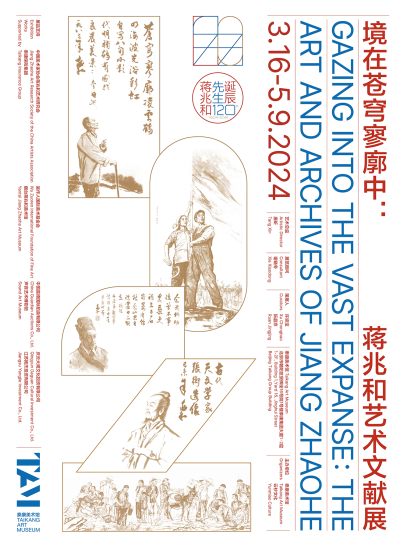
Mr. Jiang Zhaohe is a master of modern Chinese ink figure painting, whose creative practice in the transformation of traditional Chinese figure painting has had a profound impact on the development of 20th-century Chinese painting and academic education. TaiKang Art Museum continues the academic system formed since 2003 in TaiKang Space, observing and studying Mr. Jiang Zhaohe’s creative context from two academic perspectives: “medium” and “institution”. On the occasion of the 120th anniversary of Mr. Jiang Zhaohe’s birth, with the support of the Jiang Zhaohe family and Yunmiao Culture, we are planning and organizing the “Realms in the Vast Expanse of the Sky – Jiang Zhaohe Art Documentation Exhibition”.
The theme of the exhibition is inspired by Mr. Jiang Zhaohe’s self-portrait inscription from his later years (1983), which reads, “In the vast expanse of the sky, a crane soars above the clouds; the four seas bathed in rainbow light.” In the painting, Mr. Jiang smiles as he gazes up at the sky, as if scenes of the monumental changes that occurred in 20th-century China, which he personally experienced, flash before his eyes. From the resilient and impoverished grassroots people to the jubilation of the founding ceremony of the nation, from the era’s trend of defending peace and building the country to the establishment of the teaching system for modern Chinese ink figure painting, Jiang Zhaohe vividly captured these moments in his works. This self-portrait reflects his courage and innovative spirit in maintaining the artistic exploration of “truth for the people” amid the constantly changing social and historical backgrounds. Therefore, TaiKang Art Museum is holding the exhibition titled “Realms in the Vast Expanse of the Sky” to pay tribute to Jiang Zhaohe’s artistic life.
This exhibition focuses on Jiang Zhaohe’s artistic creation and teaching from the 1920s to the 1950s, bringing together more than 40 precious artworks and related documents. It delves into three main themes to thoroughly explore the breadth and depth of Jiang Zhaohe’s practice in Chinese ink figure painting creation and art education in New China.
Conscious of media
At the age of 16, he left his hometown of Luxian, Sichuan, to seek livelihood in Shanghai. He worked for 7 years successively in the photo studio of Xianshi Company, Xinxin Company, and Qihua Company. With his artistic talent and profound insight, he engaged in the creation of commercial advertisements and window displays. Alongside Ye Qianyu, Zhang Guangyu, and other modern Chinese artists, he became a prominent figure in the field of decorative arts and design in Shanghai’s commercial sector in the early 1920s. This was not only driven by societal demands but also reflections of Jiang Zhaohe’s sensitivity and conscious application of various artistic mediums. In an environment characterized by pursuit of novelty and innovation, Shanghai provided Jiang Zhaohe with abundant visual inspiration. From 1920 to 1936, he continuously absorbed techniques and principles from various mediums, laying a solid foundation for the development of figure painting in Chinese art. After 1936, Jiang Zhaohe’s artistic practice shifted towards Chinese ink figure painting, guided by realism. He inherited the techniques of Chinese folk portraiture and traditional Chinese painting while also incorporating scientific elements from Western drawing techniques to explore the method of Chinese ink figure sketching. Starting from the authentic depiction of the subjects’ inner thoughts, he vividly conveyed the charm and personality of the Chinese people since the 1920s. As a pioneer in the development of national artistic forms and exploration of individual creativity, Jiang Zhaohe made significant contributions.
System Construction
Before 1949, Jiang Zhaohe’s works mainly focused on the suffering caused by war and social turmoil. These works depicted the harsh reality faced by the people, while revealing a deep yearning for peace. After the founding of the People’s Republic of China, Jiang Zhaohe’s artistic style underwent significant changes. This transition from war to peace, from suffering to struggle, not only reflected the evolution of Jiang Zhaohe’s personal artistic style but also represented the shared historical process experienced by the entire Chinese art community. Facing new challenges of the era, Jiang Zhaohe continued to create works reflecting the new era while devoting more of his energy to teaching.During a time when traditional Chinese painting faced a survival crisis, Jiang Zhaohe dedicated himself to establishing a system for the foundational courses of Chinese painting and the teaching of ink figure painting at the Central Academy of Fine Arts. He transformed the traditional master-apprentice teaching method into a systematic teaching approach. Jiang Zhaohe generously imparted the rules and techniques of ink figure painting that he had explored and mastered since the 1920s to his students, while also devising teaching methods tailored to different grades and individual student situations. With the support of the academy leadership, Jiang Zhaohe’s teaching system was established in the Chinese painting department. In the 1990s, art theorists combined Xu Beihong’s advocacy of realistic Chinese ink figure painting with Jiang Zhaohe’s practice and teaching methods, naming it the “Xu-Jiang System”. This system left a profound mark on the establishment of Chinese painting teaching in art academies across the People’s Republic of China.
Portray the Ancients with Modern Brushes
With the growing demand for cultural development in New China and the close cultural exchanges among socialist countries led by the Soviet Union, there arose an urgent need for the reevaluation and presentation of historical and cultural heritage. In such a context, Jiang Zhaohe opened up a new creative path in the 1950s—portraying ancient historical figures—a practice that continued into his later years in the 1980s. Through his brushwork, he not only brought to life literary giants such as Du Fu, Li Bai, Tao Yuanming, Su Dongpo, and Bai Juyi, but also brought the portraits of ancient scientists like Zhang Heng, Zu Chongzhi, Seng Yi Xing, and Li Shizhen into the public eye. Over the past half-century, these works have shaped the collective imagination and memory of the Chinese people regarding ancient historical and cultural figures. Particularly noteworthy is the “Portrait of Du Fu,” which Jiang Zhaohe created based on his own likeness. This portrait, serving as the iconic illustration for Du Fu’s renowned poem “Ascending the Stork Tower” in middle school Chinese textbooks, has deeply resonated with the public. Not only did it provide a fresh visual image for the Tang Dynasty “Poet Sage,” but it also became a popular cultural symbol due to the widespread graffiti on the internet saying “Du Fu is busy,” highlighting the social impact and cultural value of Jiang Zhaohe’s work transcending eras. In a time when the majority of ancient figures lacked authentic portraits, Jiang Zhaohe’s paintings brought these once vague historical figures to life, enabling them to be recognized and understood by modern society. Through extensive dissemination via various media channels such as books, newspapers, stamps, and social media, Jiang Zhaohe’s paintings of ancient figures not only expanded tradition but also interpreted the spirit of the ancients from a contemporary aesthetic perspective, thus becoming an indispensable part of modern Chinese visual culture.
This exhibition has received strong support from the family of Jiang Zhaohe and Yunmiao Culture, providing precious artworks and documents for the exhibition. It is also generously supported by the Jiang Zhaohe Art Research Association of the China Artists Association, Taikang Insurance Group, Wu Zuoren International Art Foundation, Yantai Jiang Zhaohe Art Museum, China Guardian International Auction Co., Ltd., Sound Art Museum, Qingyun Daguan Cultural Investment Co., Ltd., and Jiangsu Yangjie Investment Co., Ltd., who have provided generous support for the exhibition. Additionally, during the exhibition, there will be a series of public educational activities and academic lectures to further expand the public’s deeper understanding of Jiang Zhaohe and his artistic contributions.



